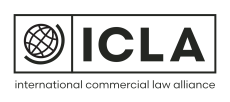The Government has announced a significant shift that will change WorkSafe New Zealand’s (WorkSafe) role from being primarily an enforcement agency to one that advises businesses at an early stage to support in managing critical risks.
WorkSafe has been criticised in the past for providing “generic and high-level “gold-plated” guidance” rather than advice which addresses the “‘on-the-ground’ realities” of workplace health and safety.
WorkSafe’s “safety-at-all-costs mentality”
WorkSafe’s reframe as a supportive regulatory body is part of the Government’s broader health and safety reforms which are aimed at reducing overcompliance and bringing a ‘common-sense’ approach to workplace health and safety.
Workplace Relations and Safety Minister Brooke van Velden has commented that WorkSafe has tended to be “feared for its punitive actions rather than appreciated for its ability to provide clear and consistent guidance” and that this is “not conducive to positive outcomes in the workplace.”
In the Government’s Cabinet paper, van Velden outlined expectations that WorkSafe would change its approach to prosecutions. This arose because of widespread public criticism that the agency was taking action against parties that were not directly responsible for a health and safety incident. The 2019 Whakaari White Island eruption was referred to by example, where charges were brought against GNS Science and National Emergency Management Agency (Nema) that were later dismissed.
Changes
The Minister noted that WorkSafe had struggled to effectively articulate the cost and effectiveness of its activities. To address this, WorkSafe’s appropriation will be divided into four new categories:
- supporting work health and safety practice
- enforcing work health and safety compliance
- authorising and monitoring work health and safety activities
- energy safety.
Outdated guidance documents are already being “slashed” from WorkSafe’s website, with 50 documents having already been removed. This is aimed at ensuring that WorkSafe’s advice is clear and consistent.
Implications
Critics of the proposed changes have questioned whether there might be a risk to health and safety generally if WorkSafe is seen to ‘go soft’ in terms of its enforcement powers. However, van Velden has denied that the changes could mean slowing down the rate of WorkSafe’s prosecutions.
We will be watching with interest to see whether WorkSafe’s rebrand will result in discernible changes to workplace health and safety outcomes – in the meantime feel free to get in touch with Lane Neave’s Workplace Law team if you have any questions about workplace health and safety.



